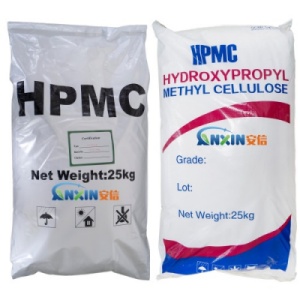Factors Affecting the Viscosity Production of Hydroxypropyl Methylcellulose
Hydroxypropyl methylcellulose (HPMC) is a widely used polymer in various industries, including pharmaceuticals, food, construction, and cosmetics. Its viscosity plays a crucial role in its applications. Understanding the factors affecting HPMC viscosity production is essential for optimizing its performance in different contexts. By comprehensively analyzing these factors, stakeholders can better manipulate HPMC properties to meet specific application requirements.
Introduction:
Hydroxypropyl methylcellulose (HPMC) is a versatile polymer with widespread applications owing to its unique properties, including water solubility, film-forming ability, and biocompatibility. One of the critical parameters affecting its performance is viscosity. The viscosity of HPMC solutions influences its behavior in various applications, such as thickening, gelling, film-coating, and sustained release in pharmaceutical formulations. Understanding the factors governing HPMC viscosity production is paramount for optimizing its functionality across different industries.
Factors Affecting HPMC Viscosity Production:
Molecular Weight:
The molecular weight of HPMC significantly impacts its viscosity. Higher molecular weight polymers generally exhibit higher viscosity due to increased chain entanglement. However, excessively high molecular weight can lead to challenges in solution preparation and processing. Therefore, selecting an appropriate molecular weight range is crucial for balancing viscosity requirements with practical considerations.
Degree of Substitution (DS):
The degree of substitution refers to the average number of hydroxypropyl and methoxy substituents per anhydroglucose unit in the cellulose chain. Higher DS values typically result in higher viscosity due to increased hydrophilicity and chain interactions. However, excessive substitution can lead to reduced solubility and gelation tendencies. Therefore, optimizing the DS is essential for achieving the desired viscosity while maintaining solubility and processability.
Concentration:
HPMC viscosity is directly proportional to its concentration in solution. As the polymer concentration increases, the number of polymer chains per unit volume also increases, leading to enhanced chain entanglement and higher viscosity. However, at very high concentrations, viscosity may plateau or even decrease due to polymer-polymer interactions and eventual gel formation. Therefore, optimizing the concentration is crucial for achieving the desired viscosity without compromising solution stability.
Temperature:
Temperature has a significant impact on the viscosity of HPMC solutions. Generally, viscosity decreases with increasing temperature due to reduced polymer-polymer interactions and enhanced molecular mobility. However, this effect may vary depending on factors such as polymer concentration, molecular weight, and specific interactions with solvents or additives. Temperature sensitivity should be considered when formulating HPMC-based products to ensure consistent performance across different temperature conditions.
pH:
The pH of the solution influences HPMC viscosity through its effect on polymer solubility and conformation. HPMC is most soluble and exhibits maximum viscosity in slightly acidic to neutral pH ranges. Deviations from this pH range can lead to reduced solubility and viscosity due to changes in polymer conformation and interactions with solvent molecules. Therefore, maintaining optimal pH conditions is essential for maximizing HPMC viscosity in solution.
Additives:
Various additives, such as salts, surfactants, and co-solvents, can affect HPMC viscosity by altering solution properties and polymer-solvent interactions. For example, salts can induce viscosity enhancement through the salting-out effect, while surfactants can influence surface tension and polymer solubility. Co-solvents can modify solvent polarity and enhance polymer solubility and viscosity. However, the compatibility and interactions between HPMC and additives must be carefully evaluated to avoid undesired effects on viscosity and product performance.
is a versatile polymer widely used in pharmaceutical, food, construction, and cosmetic industries. The viscosity of HPMC solutions plays a critical role in determining its performance in various applications. Understanding the factors affecting HPMC viscosity production, including molecular weight, degree of substitution, concentration, temperature, pH, and additives, is essential for optimizing its functionality and performance. By carefully manipulating these factors, stakeholders can tailor HPMC properties to meet specific application requirements effectively. Further research into the interplay between these factors will continue to advance our understanding and utilization of HPMC in diverse industrial sectors.
Post time: Apr-10-2024
